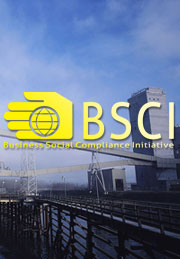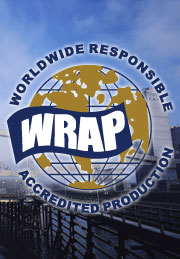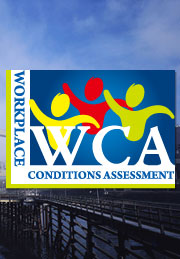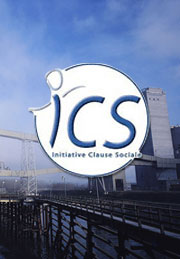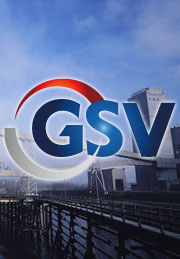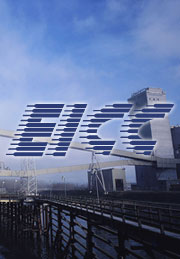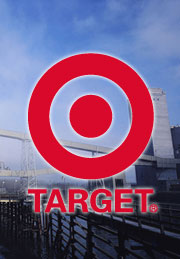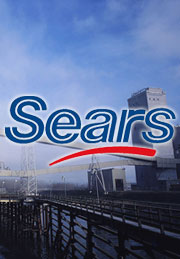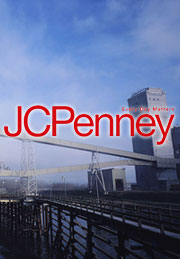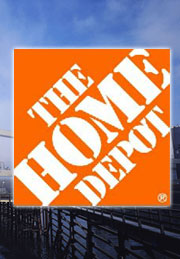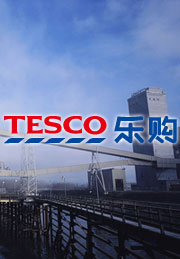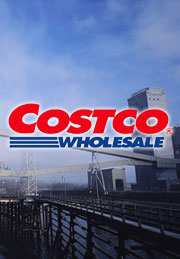客戶驗廠
- OCS
- Dollar General驗廠咨詢
- Wal-Mart驗廠咨詢
- Disney驗廠咨詢
- Target驗廠咨詢
- Jcpenney驗廠咨詢
- Homedepot驗廠咨詢
- Adidas驗廠咨詢
- SEARS/K-MART驗廠咨詢
- VF驗廠咨詢
- coca-cola驗廠咨詢
- Tesco驗廠咨詢
- PUMA驗廠咨詢
- KOHLS驗廠咨詢
- SQP驗廠咨詢
- 梅西驗廠咨詢
- Inditex驗廠咨詢
- Li&Fung反恐驗廠咨詢
- PRIMARK驗廠咨詢
- PVH驗廠咨詢
- avon驗廠咨詢
- Carrefour驗廠咨詢
- Bon-ton驗廠咨詢
- 迪卡儂驗廠咨詢
- Costco驗廠咨詢
- LEVIS驗廠咨詢
- Quiksilver驗廠咨詢
- Lowe's驗廠咨詢
- WOOLWORTHS驗廠咨詢
- ZARA驗廠咨詢
- C&A驗廠咨詢
- sgs驗廠咨詢
- NEXT驗廠咨詢
- coc驗廠咨詢
- HM驗廠咨詢
- TJX驗廠咨詢
- GAP驗廠咨詢
- Marks Spencer驗廠咨詢
- Nike驗廠咨詢
- Mattel驗廠咨詢
- 其它驗廠咨詢
顯示全部項目
聯(lián)系方式
溫州辦事處
電話:18605772928
地址:溫州平陽縣鰲江鎮(zhèn)金鰲路21幢
3單元201室
電話:18605772928
地址:溫州平陽縣鰲江鎮(zhèn)金鰲路21幢
3單元201室
上??偛?/b>
電話:021-51029391
手機: 18601606208
熱線:4006-800-016
郵箱:chaowang@tranwin.org
地址:昆山市花橋商銀路1255號雙聯(lián)國際商務(wù)中心6幢4樓(郵寄)
電話:021-51029391
手機: 18601606208
熱線:4006-800-016
郵箱:chaowang@tranwin.org
地址:昆山市花橋商銀路1255號雙聯(lián)國際商務(wù)中心6幢4樓(郵寄)
您當(dāng)前的位置:溫州驗廠網(wǎng) > 其它驗廠咨詢 > 杰西潘尼供應(yīng)商檢查部分問卷二
杰西潘尼供應(yīng)商檢查部分問卷二
來源:www.tuibailaxg.com 作者:溫州驗廠網(wǎng) 發(fā)布時間:2007-01-22
VERIFYING THE SELF-ASSESSMENT QUESTIONNAIRE
In completing the Self-Assessment Process, the following lists each question from the Self-
Assessment Questionnaire and the evidence that must be verified.
PERSONNEL ISSUES
Question 1.1 Does the factory obtain current information on local and national laws and
regulations, and incorporate this information in its business practices?
The workers should be compensated according to the local and national labor laws. The payroll
department should have the latest copies of these laws and amendments on file. These laws should
cover, but not be limited to the following areas:
• Wages and hours.
• Legal benefits.
• Minimum age for employment and related restrictions.
• Health and safety standards.
• Employment discrimination.
• General labor law.
The factory should have a procedure that will ensure that the labor laws and regulations are being
followed. There should be a manager or supervisor responsible for monitoring and updating these
laws. Any new laws should be adapted as soon as possible.
The factory should review the labor laws to ensure that the workers are being properly compensated.
If the factory uncovers a violation, that violation must be corrected as soon as possible. The factory
should document the violation and what was done to correct it. There should be a procedure to
prevent the violation from re-occurring.
It should be part of the factories official company policy that all labor laws will be obeyed.
Question 1.2 Does the factory prohibit any condition within the facility, building and/or
equipment that could cause injury or death to the workers, or any violation of law or a
JCPenney standard?
An unsafe condition is anything that can cause injury or death to the worker. The factory should have
a procedure for monitoring safety conditions within the facility. This would include the building and all
property that is attached to the building and owned, or used by the factory. There should also be a
procedure for monitoring equipment and machinery for unsafe conditions. These procedures should
be monitored by a manager or supervisor. This can be anyone that the factory designates, however,
it is usually the responsibility of the Safety Manager or Safety Supervisor. Safety issues concerning
machinery and equipment are usually monitored by an Equipment Maintenance Manager or
Supervisor.
The building should be inspected on a regular basis for unsafe conditions. Unsafe conditions should
be repaired as soon as possible. Building inspection records should be maintained indicating the
type of inspection performed, date of the inspection and the results of the inspection. Any repairs
made should also be listed.
Machinery and equipment should be inspected and maintained on a regular basis. Defective
machinery and equipment should not be used until the proper repairs have been made. Equipment
inspection records should be maintained listing the type of inspection, date of the inspection, the
results of the inspection and what repairs were made. Any repairs made should also be listed.
All workers using any machinery or equipment should be properly trained in the safe use of the
equipment involved.
All local and national laws concerning labor issues and the operation of the factory must be obeyed.
However, there are situations where a JCPenney standard is more stringent than local or national
law. When this occurs, the JCPenney standard must be followed.
Question 1.3 Does the factory effectively prohibit convict, involuntary, and forced labor?
The use of convict, involuntary, indentured or forced labor of any kind is prohibited. There are no
exceptions.
Convict Labor
The factory is prohibited from hiring convicted criminals currently in prison for committing a crime.
Even though there are conditions where it is permitted to employ criminals under local or national law,
it is expressly forbidden to import any product into the United States under United Stated Customs
Laws, if that product was produced by convict labor.
Involuntary Labor or Forced Labor
Anyone being forced to work against their will is considered involuntary or forced labor. Workers
must be given complete freedom of movement to leave the facility at any time. Factories have the
right to impose restrictions on workers entering the facility or entering certain rooms within the facility
but should never prohibit workers from leaving.
Indentured Labor
Workers should never be forced to work by contract or any other means. Workers should never be
forced to work to pay off a debt for themselves, a family member or anyone else by signing a
contract.
Worker Contracts
In some factories workers are required to sign an employment contract. These contracts will usually
list the job description, job duties, disciplinary procedures, overtime requirements and the length of
time that the contract is in effect. Some contracts are open ended. That is, the contract may be
written with no ending date. If the contract is open ended, there must be a provision that will end the
contract when the worker resigns the job. Employment contracts must not include anything that can
be interpreted as forcing the worker to work. Workers must be allowed to resign at any time.
Occasionally factories use third party agents or brokers to hire workers. If third parties are used to
hire workers, the workers’ wages must be paid directly to the worker and not the agency or broker. It
is the factories responsibility to ensure that third party agents or brokers supply legal workers that are
not convicts, indentured or forced to work in any way.
Security guards employed by the factory, or security agencies contracted for their services, must not
engage in practices that will cause workers to stay in the factory and work against their will. Security
guards should be limited to normal security functions such as protecting the factory and products
produced and the security of the workers and other factory personnel.
The factory should not retain the worker's original identification card, work permit or other form of
identification.
Employees must have freedom of movement within the dormitories and be free to leave at any time.
Question 1.4 Does the factory obtain documentation for proof of age and eligibility for
employment from all potential workers prior to hiring?
When hiring workers, the factory should verify proof of age and eligibility to work according to local
and national laws or JCPenney standards. This proof must be in a form of legally acceptable
documents. The following are examples of the type of documents that are acceptable:
Proof of age as required by the country where the factory is located, including but not limited to:
• Official birth certificate.
• Official identification card.
• Official school records.
• Proof of residence.
• Immigration or other legal papers as required.
• A statement of age containing:
• Employee signature.
• Employee identification number or other means of identification.
• Date of signature.
All workers should fill out an employment application listing their name, address, date of birth, place
of birth, citizenship, type of job applied for and any information as required by local and national law.
This application should be signed by the worker.
The factory should have a procedure that explains to the workers minimum age and eligibility
requirements for the job applied for. The factory should explain all benefits that the workers are
entitled to. This includes social security (medical and pension), savings, bonus, overtime hours,
overtime pay, worker contracts, job requirements, disciplinary procedures, dormitory, meals and
anything that will affect the worker.
All benefits and requirements should be prominently posted so they can be read by all the workers.
All worker personnel records should be periodically reviewed to ensure that the proper documents are
on file and correctly updated.
Question 1.5 Does the factory prohibit the hiring of workers under the legal age or
JCPenney standard, or ineligible workers, and does the factory keeps copies of age and
eligibility?
It is the responsibility of the factory to ensure that all workers hired are of legal age and meet the
eligibility requirements of the country where the factory is located. If it is determined that these
requirements are below the JCPenney standards, then the JCPenney standards will apply.
The factory should have a procedure to screen all workers prior to hiring, to ensure that they meet all
applicable age and eligibility requirements. Copies of all applicable proof should be kept on file for all
workers.
There should be a manager or supervisor responsible for maintaining and updating worker files.
Question 1.6 Does the factory effectively prohibit all forms of harassment, abuse, and
physical and/or verbal abuse?
Workers should be fairly treated according to the laws of the country where the factory is located.
The factory should expressly prohibit all forms of harassment, verbal and/or physical abuse. This
includes, but is not limited to:
• Physical or verbal coercion.
• Sexual abuse.
• Harassment, or abuse in the form of disciplinary action.
• Any harassment or abuse from any person, such as security guards, or any manager, supervisor
or worker.
Question 1.7 Does the factory have procedures to ensure employees are compensated
in accordance with local laws and regulations?
The factory should have a payroll procedure that will ensure workers are compensated in accordance
with local and national laws. The factory should have a manager or supervisor responsible for the
payment of wages and all issues relating to wages. There should be an itemized listing of all
deductions. These procedures should include, but not be limited to:
• A detailed method of payment as appropriate.
Check.
Cash.
Direct deposit.
• The basis for payment.
Hourly.
Weekly.
Monthly.
Piece rate.
Combination (Hourly and piece rate).
• A detailed procedure for wage calculation where applicable.
Quota for piece rate or hourly calculation.
Adjustment to meet minimum.
Hourly or monthly minimum rate.
Bonus or other incentives.
• Itemized deductions.
Social Security (Medical and/or pension).
Required local and national taxes.
Issuing and repayment of loans.
Any other deductions.
• Frequency of payment.
Weekly.
Monthly.
Other.
• Specific length of the normal work day.
Number of hours.
Start and finish time.
• Define the normal week.
Number of consecutive days.
Specific days of the week.
• Rest and meal breaks.
Number of breaks.
Length of break.
Time of day or shift.
• Designate days off.
Normal day(s) off each week.
Holidays (Legal and/or religious).
Vacation.
• Define overtime.
Hours.
Compensation rate.
The factory should have a detailed pay slip that shows all the deductions made and the method of
calculation. If workers receive cash payments there should be a master payroll record with each
workers’ signature indicating that they received their pay.
The workers should be notified in writing of any changes in their actual pay and/or payroll procedures
and the reasons for these changes.
Any miscalculations or under payment of wages must be corrected immediately.
Any worker's complaints regarding wages must be investigated immediately. If it is determined that
the workers were not correctly paid, an adjustment must be made immediately.
Question 1.8 Are factory workers, at the time of hiring, made aware of their legal rights
regarding hours worked, and wage compensation?
When factory workers are hired they should receive an explanation of their legal rights concerning the
working hours of the factory. They should be told if overtime is required and how many overtime
hours they can expect to work daily, weekly and monthly. They should be given an explanation of the
laws concerning overtime.
A written explanation of wage and overtime laws should be provided to the workers. This explanation
should be signed by the worker and a copy should be kept in the worker’s file.
The factory should periodically review the laws concerning hours worked and wage compensation to
ensure they are in compliance with the most current laws. Any areas that are not current should be
corrected. Copies of the latest laws should be kept on file.
Question 1.9 Does the factory prominently post minimum wage rates, allowance
information, benefits policies, and regular and overtime wages in the native language(s) of the
factory workers and management personnel?
The factory should list its policies concerning minimum wage rates, regular working hours, overtime
hours and benefits. Any applicable local and national wage laws should also be listed. These
postings should be located in prominent areas, i.e., the worker entrance, time clock, or cafeteria; so
the workers can read them at any time.
All postings should be in the native language of the factory workers and factory management
personnel. In the event that the factory hires workers that speak a language other than the language
of the country where the factory is located, these postings should also be in that language. It is
possible that the factory will need postings in more than one language.
Question 1.10 Does the factory have, utilize, and maintain an organized payroll system
including an accurate time recording device?
The payment of wages can be a complicated process. To ensure that the workers are accurately
paid, an organized payroll system should be used. A computer payroll system is recommended for
accuracy and consistency. All methods of payment, including time work, piece work, incentives,
bonus, and etc., should be part of the payroll system. All benefits and allowances such as meals,
housing, uniforms, etc., should be included. All deductions such as social security (medical and
pension), taxes, loans, and etc., should also be included.
If the factory is not equipped for an organized or automated payroll system, a commercial payroll
service, if available, is an acceptable alternative.
For piece rate and/or quota payments, employee sign-off sheets should be available confirming the
correct unit counts. The employee should sign off on any random re-counts that are used for
verification.
Since accurate payroll calculations are based on the time that the factory workers work, an accurate
time recording device such as an electric or electronic time clock should be used. The time clock
should be periodically checked for accuracy. Each worker should have their own time card to record
time in and time out including meal breaks and rest breaks. If an electronic recording device is used,
each worker should have a worker identification card to record time in/time out, meal breaks and rest
breaks. The factory should maintain a summary sheet listing the time worked for all the workers.
The factory should perform periodic reviews to determine the accuracy for the method of paying the
workers. Mechanical and electronic equipment should be checked to ensure that it is in proper
working order. If this equipment is found to be inaccurate, or not in working order, corrective action
should be taken, including adjustment of back wages, if required, for the period of time when the
equipment malfunctioned.
Question 1.11 Does the factory produce and retain payroll records to support
compensation, including the payment of overtime and the deduction or required taxes?
The factory should keep payroll records for at least one year or longer if required by law. Payroll
summaries should also be retained with the following information:
• Name and identification number of each employee.
• Hourly, weekly, monthly rate or piece rate if applicable.
• Payment of minimum wage.
• Gross pay.
• Net pay.
• Pay period.
• Payment date.
• Minimum wage.
Question 1.12 Does the factory provide all employees with pay information which details
the current period's wage calculation?
The factory should provide each worker with a pay stub or some other form of documentation listing
the details for the pay period involved. This information should include, but not be limited to:
• Total hours worked including regular and overtime hours.
• Gross wages including advances or loans.
• Calculation of overtime, quota incentive and piece rate if applicable.
• Make up pay for piece rate under the minimum wage.
• Social Security, pension, savings.
• Other deductions including repayment of loans.
• Net Pay.
The factory should periodically interview workers, selected at random, to verify that they have
examined a detailed pay record and that they understand the calculation of their gross pay and net
pay. Any deviations from the established procedures are to be corrected in a timely manner.
Question 1.13 Does the factory pay piece rate workers at a rate equivalent to the minimum
wage required by law?
The factory must ensure that all workers earn the minimum rate according to law. If a piece rate
worker cannot make the standard, the factory must adjust the standard of the wage rate so that the
workers wage will be equal to the legal minimum wage. The worker should be advised of this and the
payroll records should reflect this adjustment.
Question 1.14 Does the factory ensure that the workers do not work more hours per day
and per week than the legal limits, or the JCPenney standard?
There are times when it is necessary for a factory to work overtime to meet production and delivery
schedules. However, workers who work excessive hours will loose efficiency and production will
decrease. In addition, the injury rate will increase.
Workers must not exceed the maximum number of hours allowed by law or the JCPenney standard.
In the event that there is no local or national law governing maximum working hours or current law is
in conflict with the JCPenney standard, then the JCPenney standard will apply.
If the factory determines that it is necessary to work more hours then allowed by law, they must
obtain a waiver from the appropriate governing authority. This waiver must list the period time
covered and the amount of hours to be worked. Workers must be paid for extra overtime according
to local or national law.
The department or individual responsible for payroll must perform periodic time card reviews to
ensure the hours worked by employees (voluntarily or involuntarily) in a given day, week or month do
not exceed legal limits. If official waivers have been issued, the limits of the waiver must not be
exceeded.
Question 1.15 Does the factory have policies that explicitly prohibit discrimination?
The factory must hire workers based on their ability to do the job not on any physical or personal
characteristics or beliefs.
The factory must have a policy that expressly prohibits all forms of discrimination. The workers must
be made aware of this policy.
HEALTH AND SAFETY
Question 2.1 Does the Factory comply with national and local health and safety laws and
regulations?
The factory must provide a safe working environment for the workers. The building must be in good
repair with no safety hazards. Procedures should include, but not be limited to:
• A plan for fire safety.
• Adequately equipped first aid kits.
• Easily accessible sanitary drinking water in work and residential areas.
• Sanitary toilet facilities.
• Adequate ventilation throughout building and dormitory.
• Structurally sound and clean building facilities, including dormitories.
• Machinery and equipment that is safe and will not cause injury to the workers.
• Emergency evacuation plans, in the native language(s) of the employees, posted in view of
factory workers (i.e. a diagram of the factory layout with emergency exits and routes highlighted).
The factory should maintain inspection records and operating permits for building and equipment as
required by law. This should include, but not be limited to:
• Inspection certificates and citations issued by government agencies.
• Operating permits issued by government agencies.
• Health and safety reports detailing findings, recommendations and corrective actions.
• Machinery inspection and maintenance reports issued by factory management.
• Fire extinguisher inspection records noting dates inspected and expiration.
• Records of fire safety drills including the dates held and any pertinent details on the results of the
drills.
• Work injury reports including the nature and frequency of accidents.
• Clinic logs listing the reason for visit.
The factory should comply with all local and national government health requirements. Records and
correspondence should be maintained for any on site inspections. Deficiencies discovered during
these inspections should be recorded. The factory should correct all deficiencies and notify the
appropriate government agency for a re-inspection. Records should be maintained of the reinspection.
Once the factory passes the re-inspection, all documentation should be kept as evidence
of the passed inspection.
Question 2.2 Does the Factory have procedures for machinery and equipment, and
chemical safety?
The factory should have procedures in place for the safe operation and use of machinery and
equipment. This should include the handling, use and storage of chemicals. These procedures
should include, but not be limited to:
• Machinery and equipment safety:
Training workers in the safe use of machinery and equipment.
Providing appropriate personal protective equipment, free of charge, to factory workers and
requiring them to use it. This equipment includes:
Respiratory protection
Skin protection
Eye and face protection
Hearing protection
Foot protection
Hand protection
Head protection
Providing appropriate safety guards and features on all machinery and equipment and ensuring that
they are functioning properly.
Ensuring through routine inspection that electrical equipment and outlets are not overloaded.
Ensuring that boilers have operational pressure release valves.
• Chemical safety:
Ensuring proper storage of hazardous and toxic materials.
Providing periodic physical exams for workers handling hazardous materials.
Training workers in chemical safety.
The factory should perform the following functions to ensure that the workers are performing under
the safest conditions possible:
Periodically review all safety procedures to ensure that they are adequate and being followed by the
workers.
Develop programs and materials to train workers and managers on procedures for machinery and
equipment and chemical safety.
Train the workers on the use of personal protective equipment and safety guards. This equipment
should be accessible and the workers should be required to use it.
Store hazardous or toxic materials properly.
Continually inspect equipment and machinery to ensure proper operation of required safety features
and that the workers using this equipment are properly trained.
Periodically review files to ensure required health and safety records are appropriately maintained
and distributed.
Require the workers to follow all safety procedures and discipline workers who do not.
Question 2.3 Has the Factory implemented procedures for fire safety which include
worker housing and dormitories?
Fire safety is extremely important. The factory should have procedures in place that will ensure the
workers are protected against fire and fire related hazards. This should include worker housing.
The building and/or dormitory should have fire extinguishers placed in every room. A fire extinguisher
should be placed within 50 feet of each worker, and be of an appropriate size that can be handled by
the average worker. The type of fire extinguisher used depends upon the type of fire. For example,
an area that uses electrical equipment will need a different type of fire extinguisher than an area
where chemicals are used. All workers should be trained in the proper use of fire extinguishers. In
addition, selected workers should receive extensive fire training and be organized as a fire fighting
brigade. Fire extinguishers are intended for spot fires which are usually small fires. These fires can
start by spontaneous combustion, defective or overheating machinery and equipment, careless
smoking or other causes. Sprinkler systems, fire hoses or other fire fighting devices are intended for
large fires, but should not replace fire extinguishers. Fire extinguishers should be serviced annually.
Each fire extinguisher should be tagged indicating the date and type of service.
The building should have enough emergency exits to allow the workers to leave the building in a fast
and orderly manner. Exits should be on opposite sides of the building. If the building is more than
one story there should be sufficient stairways to allow the workers to get to the ground floor and exit
the building in a fast and orderly manner. A traditional fire escape on the outside of the building is
preferred, however, any stairway that leads to the ground floor and is near an exit to the outside is
acceptable.
All exits should be clearly marked and accessible. Exits must not be locked or blocked in any way. If
building security or theft is a concern then push bars should be used on the exit doors. This will
prevent the door from being opened from the outside, but allows the door to be easily opened from
the inside in case of an emergency. For additional security an alarm can be installed on the door to
advise security personnel when it is opened.
The factory should conduct periodic fire drills to ensure that all workers know how to leave the
building in a fast and orderly manner.
The factory should have procedures to train all managers and workers in fire safety.
The factory should develop a fire evacuation plan. This plan should clearly define the nearest exit
path and be prominently posted for the workers. For large buildings, several evacuation plans should
be posted at different locations throughout the building.
The factory should conduct periodic fire safety inspections of the building, machinery and equipment.
Any failure of this inspection should result in immediate corrective action.
FACILITY AND ENVIRONMENT
Question 3.1 Is there sufficient work space for each worker to perform their duties in a
safe manner without interference from other workers, machinery or equipment, and raw
materials used in production?
The factory should be designed and operated in a manner that will allow sufficient area for each
worker to perform their duties without interference from other workers. This area should include
sufficient space for materials, tools and other items that are necessary for manufacturing the product.
There should be sufficient room between workers to allow them to leave their work area in a fast and
orderly manner in case of fire or other emergency. Each work station should have adequate lighting
to reduce the risk of eye strain.
The factory should perform periodic inspections to ensure that the condition of each work station is
safe and well lit. Any defective areas should be repaired or replaced as required. Work station
inspection records and a corrective action procedure should be maintained.
